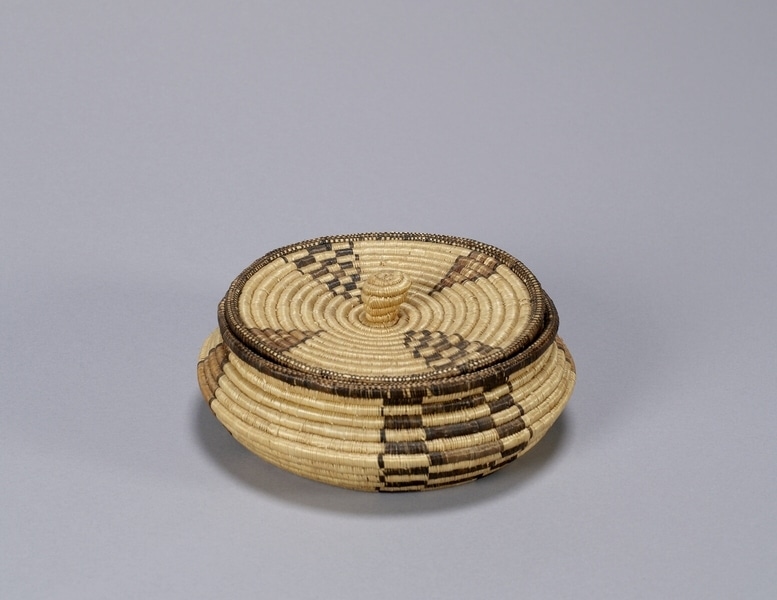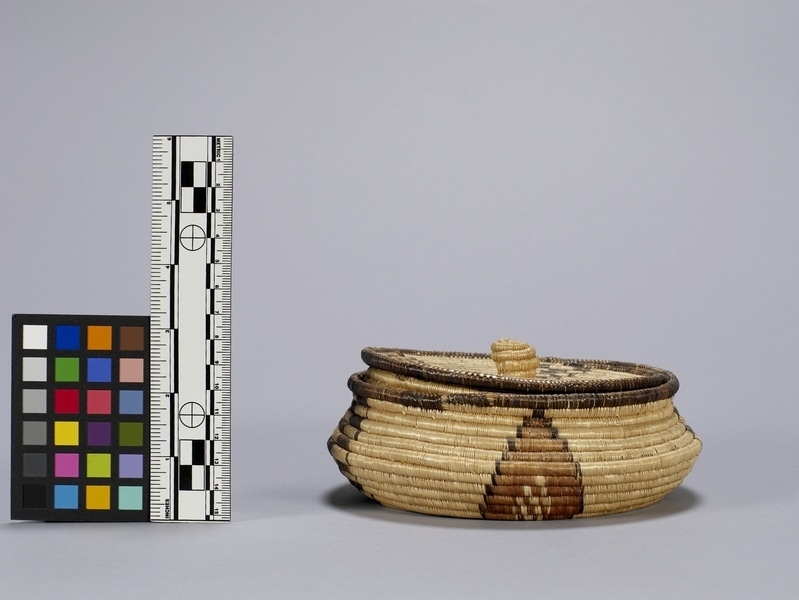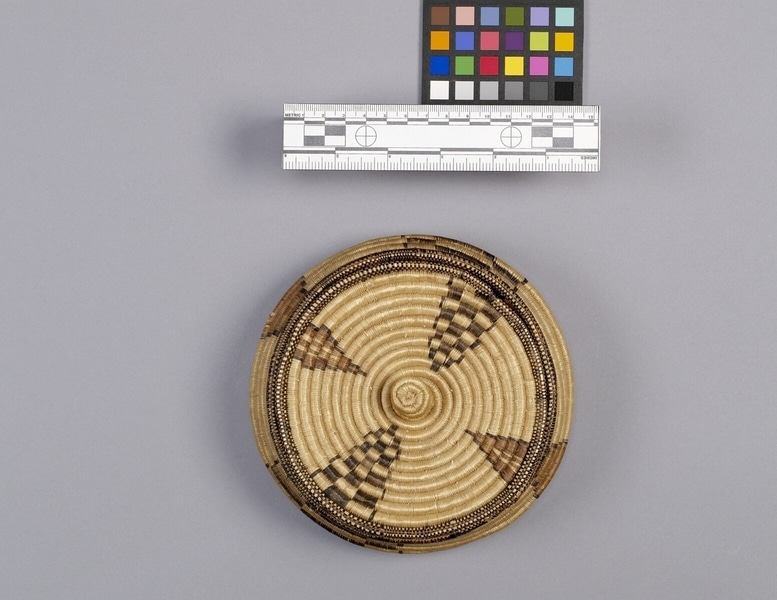Basket Item Number: K4.92 a-b from the MOA: University of British Columbia




Description
A coiled basket with the compressed shape of a jar. The main design of the basket (part a) consists of four equally spaced bottom central pointing triangles. One pair of triangles are checkered dark brown over a natural coloured background. Another pair of triangles are red-brown outlined with dark brown, and having natural coloured middles. Each pair of triangles are opposite one another. The rim of the basket (part a) has a checkered dark brown pattern over a natural coloured background. The lid (part b) has the same rim pattern, and main design as the basket. The lid (part b) has a knob at the centre, and a straight lower-edged inner side which fits into the basket rim.
History Of Use
Based on its lid, this basket was likely used for storage. Grass weaving is done by both men and women, but baskets are traditionally woven by most women. Angular, triangular, and checkered patterns are common among Ovimbundu basketry. The intricate shape and design of this basket indicates a skilled basket maker.
Specific Techniques
Dye used in this basket are dark brown and red-brown. Red dye is made by cooking leaves from an evava plant and boiling them in water with bark of the ukondo tree. After they are sufficiently simmered, they are mixed with ash and buried. Brown dye is made by mixing red and yellow dye, which is made from pounding and boiling wild rhubarb, or they could have made a light black dye. Black dye is made when evava leaves are mixed in an iron solution; iron is obtained from stagnant muddy pools. Grass are placed into the evava-iron solution and boiled to darken. It can be darkened further by boiling the solution again and adding pounded ungalo leaves.
Item History
- Made in Angola
- Collected during 1950
- Owned by Anne E. Copithorne before November 14, 1973
- Received from Anne E. Copithorne (Donor) on November 14, 1973
What
Who
- Culture
- Ovimbundu
- Previous Owner
- Anne E. Copithorne
- Received from
- Anne E. Copithorne (Donor)
Where
- Holding Institution
- MOA: University of British Columbia
- Made in
- Angola
When
- Collection Date
- during 1950
- Ownership Date
- before November 14, 1973
- Acquisition Date
- on November 14, 1973
Other
- Item Classes
- basketry
- Condition
- good
- Current Location
- Case 100
- Accession Number
- 0251/0105 a-b